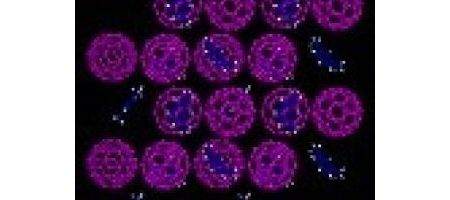A new form of very hard carbon clusters with a rather unusual structure is so hard it dented the diamond anvil used in its creation.

The clusters are a mix of crystalline and disordered structures – something previously theorized but never before created.
The team – led by Carnegie’s Lin Yang – started with a substance called carbon-60 cages, made of highly organized balls of carbon constructed of pentagon and hexagon rings bonded together to form a round, hollow shape.
An organic xylene solvent was put into the spaces between the balls to form a new structure, and pressure was applied to see how it changed under different stresses.
At relatively low pressure, the carbon-60’s cage structure remained. But as the pressure increased, the cage structures started to collapse into more amorphous carbon clusters. However, the amorphous clusters remained in place, forming a lattice structure.
The team found , though, that within a narrow window of pressure, about 320,000 times the normal atmosphere, the new structured carbon forms without bouncing back to the cage structure when the pressure is removed.
The solvent’s clearly key, as when it’s removed by heat treatment, the material loses its lattice periodicity. Because there are many similar solvents, it’s theoretically possible, says the team, that a variety of similar, but slightly different, carbon lattices could be created using this pressure method.
“We created a new type of carbon material, one that is comparable to diamond in its inability to be compressed,” says Wang. “Once created under extreme pressures, this material can exist at normal conditions, meaning it could be used for a wide array of practical applications.”
He says there are possible mechanical, electronic and electrochemical uses for the substance.






